|
|
|
#1 |
|
Guest
Posts: n/a
|
One of John's favorite subjects
Well the first thing we need to do before we start is to clear up a couple of old myths. Because as long as you believe these two, you will live forever in denial of reality... and as such there will be no help for you...  Myth Number One There is no Atmosphere on the Moon This has been floating around for about as long as the "Dark side of the Moon" Myth Number Two Since we only see one side of the Moon, the other side must be Dark" Lets start with Myth Number Two The moon revolves on its axis ONE revolution per orbit... thus we always see the same face... When the Earth is between the Moon and the Sun we see a full moon and the farside of the Moon is dark..However when the Moon is between the Earth and the Sun... we see a 'New Moon' that is dark, while the farside is now in full sunlight... PHASES OF THE MOON Now that we have that cleared up, (don't feel bad because a curator at the Lick Observatory used "Darkside" to explain to tourists... she gave us an evil glare when we corrected her  ) lets go on to #1 ) lets go on to #1Myth Number One There is no Atmosphere on the Moon This is UNTRUE and the only contention between official sources and John Lear is the AMOUNT And since John's story has been the same forever and NASA et al keep changing theirs, I know where I will put my money  Does the Moon Have an Atmosphere? EXHIBIT #1 Lunar Atmosphere Data Sheet Diurnal temperature range: >100 K to <400 K (roughly -250 F to +250 F) Total mass of atmosphere: ~25,000 kg Surface pressure (night): 3 x 10-15 bar (2 x 10-12 torr) Abundance at surface: 2 x 105 particles/cm3 Estimated Composition (particles per cubic cm): Helium 4 (4He) - 40,000 ; Neon 20 (20Ne) - 40,000 ; Hydrogen (H2) - 35,000 Argon 40 (40Ar) - 30,000 ; Neon 22 (22Ne) - 5,000 ; Argon 36 (36Ar) - 2,000 Methane - 1000 ; Ammonia - 1000 ; Carbon Dioxide (CO2) - 1000 Trace Oxygen (O+), Aluminum (Al+), Silicon (Si+) Possible Phosphorus (P+), Sodium (Na+), Magnesium (Mg+) Composition of the tenuous lunar atmosphere is poorly known and variable, these are estimates of the upper limits of the nighttime ambient atmosphere composition. Daytime levels were difficult to measure due to heating and outgassing of Apollo surface experiments. SOURCE: NASA Lunar Fact Sheet So Right from the start we can see that YES there is an atmosphere, albeit tenuous according to NASA's data. EXHIBIT #2 Cloud Above the Crater Alphonsus Excerpt For years scientists believed there was no trace of gas or an atmosphere on the moon. Now there is some evidence of an atmosphere, though it may be almost too thin to measure. During an occultation of the Crab nebula, astronomers using a radio telescope at Cambridge University detected a slight bending of the rays of the nebula. This deflection could have been due to a thin lunar atmosphere. In 1956 observers reported what appeared to be a cloud above the crater Alphonsus. In 1958 a Soviet astronomer, Nikolai A. Kozyrev, announced an apparent eruption from the crater. He took spectrograms, which indicated the presence of rarefied gases. His findings caused a revival of debates on the volcanic versus the meteoric origin of moon craters. Many scientists believed that Kozyrev had seen not a true volcanic eruption but a puff of gas and dust from below the surface, probably caused by heat. Some small craters within Alphonsus have “black halos” believed to be deposits of material that have filled the rills along which they are located. Source Encyclopedia Britanica - Article-204895 EXHIBIT #3 Lunar Weather Report: 1946 Clear today, no chance of rain or lightning storms..... 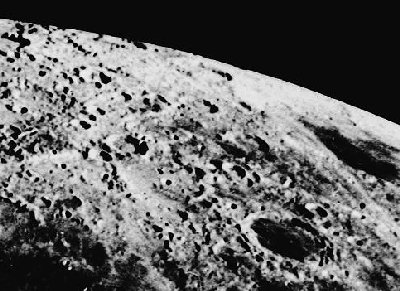 LICKOBS9 Extreme weather warning... Hurricane Endymion moving in... 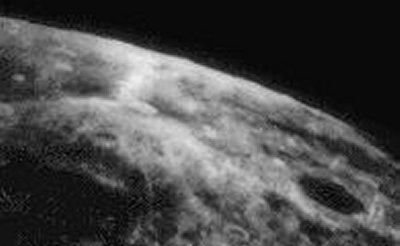 LICKOBSA Lick Observatory, 1946 January 17d 07h 51m UT The two images above are clips from two Lick Observatory photographs taken days apart in 1946. The large black crater is Endymion... the clips are located at the 1 O'Clock position on the original images which are available below. As you can see the second image is obscured by a cloud of some form, that covers a large area Photo Source EXHIBIT #4 Plume of Vapor or Dust Cloud captured on the Lick Telescope 1946. There are more anomalies on Lick images but we will get to those in another thread as they do not concern us with the atmosphere 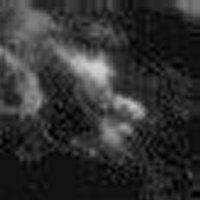 SIZE="4"]EXHIBIT #5[/SIZE] Atmosphere: Extensive and of High Scientific Interest Excerpt Though the Moon is surrounded by a vacuum higher than is usually created in laboratories on Earth, its atmosphere is extensive and of high scientific interest. During the two-week daytime period, atoms and molecules are ejected by a variety of processes from the lunar surface, ionized by the solar wind, and then driven by electromagnetic effects as a collisionless plasma. The position of the Moon in its orbit determines the behaviour of the atmosphere... In addition to the near-surface gases and the extensive sodium-potassium cloud detected around the Moon (see the section Effects of impacts and volcanism below), a small amount of dust circulates within a few metres of the lunar surface. This is believed to be suspended electrostatically... Source Encyclopedia Britanica - Article-54205 |

|
|
|
#2 |
|
Guest
Posts: n/a
|
EXHIBIT #6
Moon's Extended Sodium Atmosphere 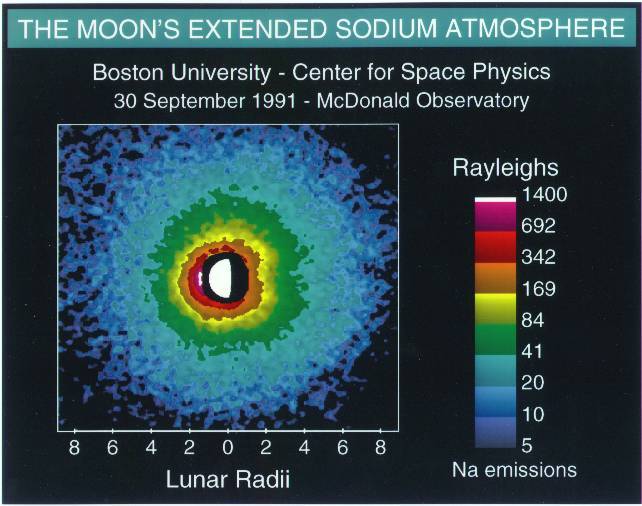 Credit: Boston University The outer limits of the lunar sodium exosphere. A new wide-angle coronagraphic-type imaging system used for the lunar eclipse of 16 July 2000 resulted in detections of the lunar sodium exosphere out to 20 lunar radii, approximately twice the size recorded with narrower fields of view during previous eclipses. SOURCE: Boston University Full Report on PDF File Now John has spoken with Howard Menger who has been to the Moon and gave a description of the color of the sky on the Moon.... A saffron yellow color. As sodium gives of a yellowish orange color... perhaps the high sodium content in the Lunar Atmosphere accounts for what Howard saw? Well according to Howard... True Color of the Lunar Sky We sent Howard a color chart and had him mark the color as he remembered it... here is that chart... 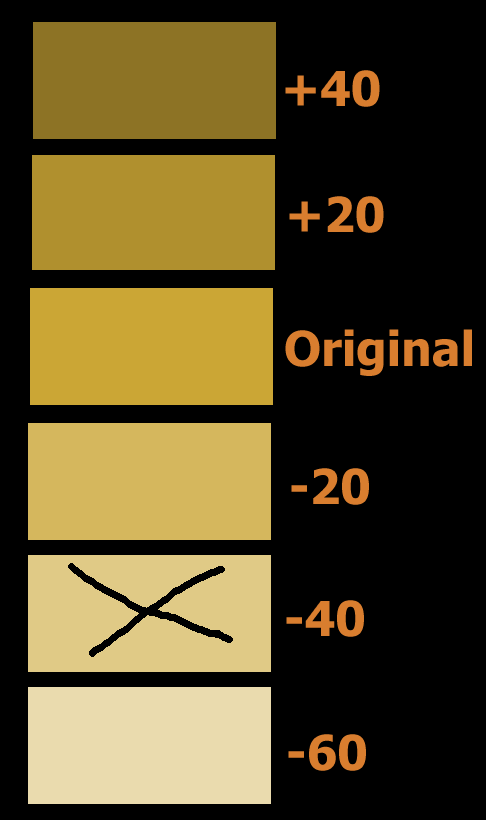 See Opinion by John Lear See Howard Menger's Story (Awaiting reprint approval) We took Copernicus Crater and added the True Color Sky... 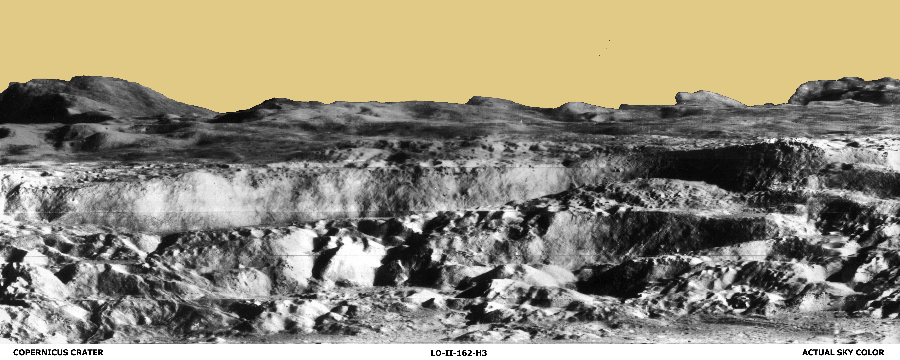 Alan Bean however, describes the Lunar Sky... "...as black as a pair of black patent leather shoes!"  Sodium Beam Laser being fired from Kirtland AFB 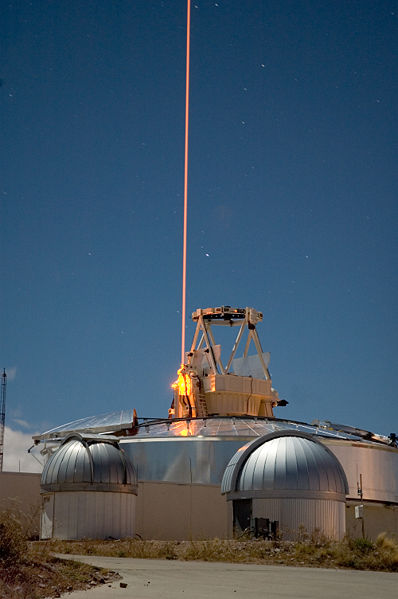
|

|
|
|
#3 |
|
Guest
Posts: n/a
|
EXHIBIT #7
Dust on the Horizon As the Sun Sets on the Moon, we get an interesting view from Clementine... Remember that Clementine is a DoD/NAVY project, the OTHER Space Program, and NOT NASA 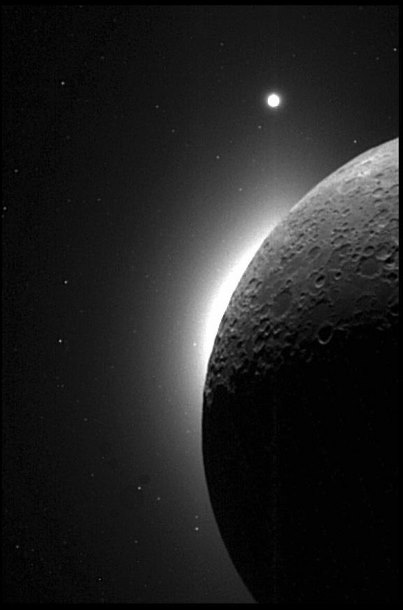 Courtesy of NASA/Jpl 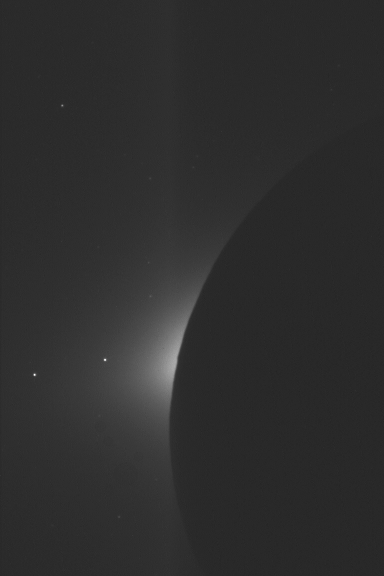 Yes you CAN see stars in the 'sky', the large orb is Venus... funny that Apollo shots NEVER show any... but thats for later |

|
|
|
#4 |
|
Guest
Posts: n/a
|
EXHIBIT #8
Smart 1 Impact Raises Dust Plume Recently the ESA Lunar Probe Smart 1 impacted on the Lunar surface, raising a plume of dust high into the atmosphere... Atmosphere? The event was captured on film by several sources and does indeed clearly show a plume of dust, and both NASA and ESA call it a "plume", despite what we have been told about the density of the atmosphere. {Note: NASA has never stated that there is NO atmosphere - see previous page) 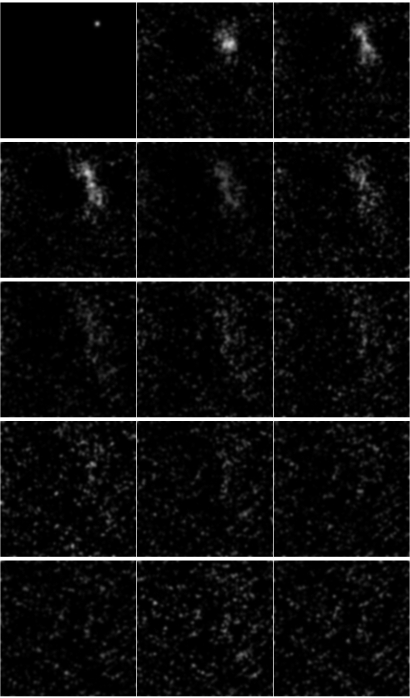 FULL SIZE IMAGE What is important in this set of images is the fact that the area of each small frame is 2 km x 3 km and they are taken 1 minute apart. Notice how the dust spreads out over the 6 square kilometer area of the frame Here it is in animation so you can see the movement of the dust plume 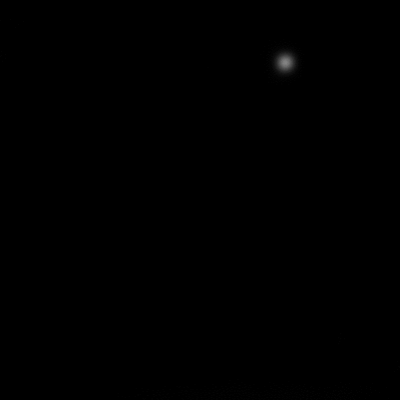 Image Credit: ESA "Analysis of images obtained at the CFHT by Christian Veillet have revealed a plume of debris thrown up when SMART-1 impacted the lunar surface." Image Source: ESA |

|
|
|
#5 |
|
Guest
Posts: n/a
|
Exhibit #9
The Lunar Sodium Atmosphere: A Study as Observed Through Four Lunar Eclipses Abstract The Moon's sodium atmosphere has been imaged during four lunar eclipses: November 29, 1993, April 2, 1996, September 27, 1996, and March 24, 1997, using a coronagraph type system at the Boston University four inch telescope located at the McDonald Observatory, TX, and at La Palma, Canary Islands. The Moon is imaged with a 5893A filter with a FWHP of 16A to include the sodium D1 and D2 lines. The eclipse condition provides the opportunity to observe the faint lunar atmosphere when the bright disk of the Moon is within the umbra and penumbra greatly reducing the scattered light in the system. In all four cases, the sodium atmosphere was imaged out to radial distances of 10 lunar radii. The brightness patterns were essentially uniform in azimuth and exhibited a radial decay far more gradual than seen at sub-solar radial distances at quarter Moon. While some variability appears among the four data sets, the large scale morphology under eclipse conditions was remarkably constant during the 1993 to 1997 events. This implies a steady source of sodium at times of full Moon. Smithsonian Reports |

|
|
|
#6 |
|
Guest
Posts: n/a
|
Exhibit #10
Moon Fountains Sometime NASA has a fine sense of humor... especially when they are doing a quick recovery to explain away things astronomers have seen for hundreds of years... like clouds and moving lights on the Moon They have however been officially tracking every report of these TLP's since 1956... a copy is available on our website Okay so MOON FOUNTAINS? What the heck are those? Well on Earth we call them Sunset and Sunrise Rays... and they look like THIS.. 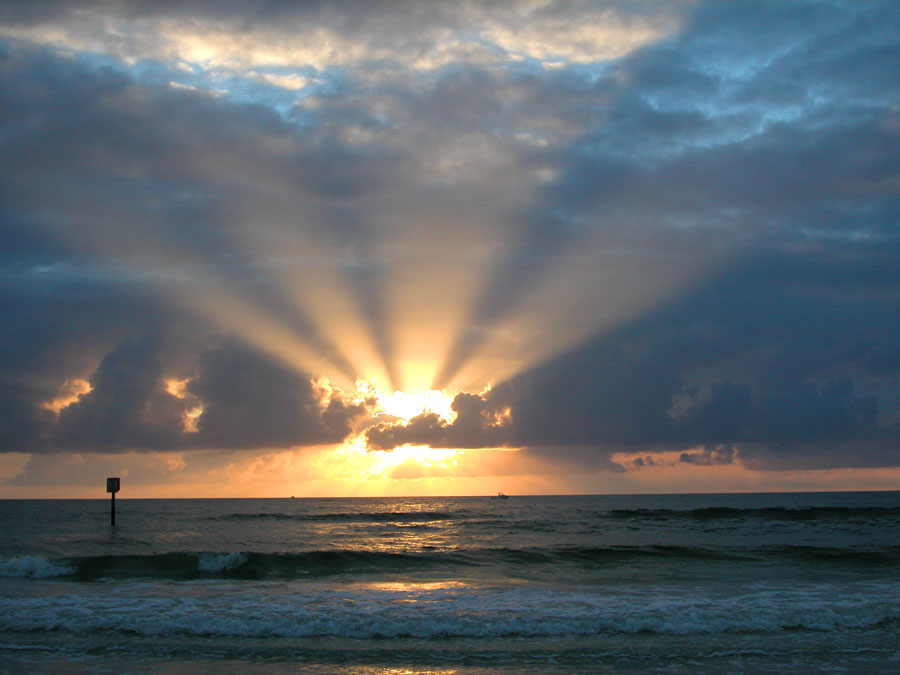 October sunset, Clearwater Beach NASA Space Science Moon Fountains March 30, 2005 Excerpt #1 In the early 1960s before Apollo 11, several early Surveyor spacecraft that soft-landed on the Moon returned photographs showing an unmistakable twilight glow low over the lunar horizon persisting after the sun had set. Moreover, the distant horizon between land and sky did not look razor-sharp, as would have been expected in a vacuum where there was no atmospheric haze. But most amazing of all, Apollo 17 astronauts orbiting the Moon in 1972 repeatedly saw and sketched what they variously called "bands," "streamers" or "twilight rays" for about 10 seconds before lunar sunrise or lunar sunset. Such rays were also reported by astronauts aboard Apollo 8, 10, and 15. Well I'll be!!! They have known about this since Surveyor  Just forgot to mention it? Why, because they know that to get this effect you would need DUST in the air? Here is the original Surveyor 1 picture... 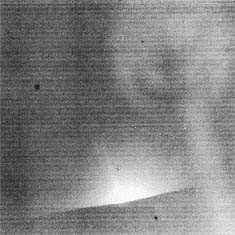 Here is a closer version I recently found  Surveyor 1 Solar Corona Spike "Solar corona in the photograph observed by Surveyor 1, 16 minutes after sunset on the Moon June 14,1966," was remarked Gordon Newkirk, of the High Altitude Observatory. "A bright coronal streamer is visible as a thin pencil of light extending out of the brighter inner corona, against which the lunar horizon is silhouetted." 16 minutes after sunset on the Moon June 14,1966 Surveyor Observations of Lunar Horizon-Glow[/COLOR] J. J. Rennilson1 and D. R. Criswell2 (1) Division of Geological and Planetary Sciences, California Institute of Technology, Pasadena, Calif., USA (2) The Lunar Science Institute, Houston, Tex., USA Received: 13 August 1973 Abstract Each of the Surveyor 7, 6, and 5 spacecraft observed a line of light along its western lunar horizon following local sunset. It has been suggested that this horizon-glow (HG) is sunlight, which is forward-scattered by dust grains (~ 10µ in diam, ~ 50 grains cm–2) present in a tenuous cloud formed temporarily (lap 3 h duration) just above sharp sunlight/shadow boundaries in the terminator zone. Electrically charged grains could be levitated into the cloud by intense electrostatic fields (> 500 V cm–1) extending across the sunlight/shadow boundaries. Detailed analysis of the HG absolute luminance, temporal decay, and morphology confirm the cloud model. The levitation mechanism must eject 107 more particles per unit time into the cloud than could micro meteorites. Electrostatic transport is probably the dominant local transport mechanism of lunar surface fines. This work was supported in part by the California Institute of Technology under Grant NGR 05-002-158, and in part by the Lunar Science Institute, which is operated by the Universities Space Research Association under Contract No. NSR-09-051-001 with the National Aeronautics and Space Administration. This paper is Lunar Science Institute Contribution No. 163. Surveyor Observations of Lunar Horizon-Glow Horizon Dust Glows The Following images were taken by Surveyor 7 Provided by David Darling 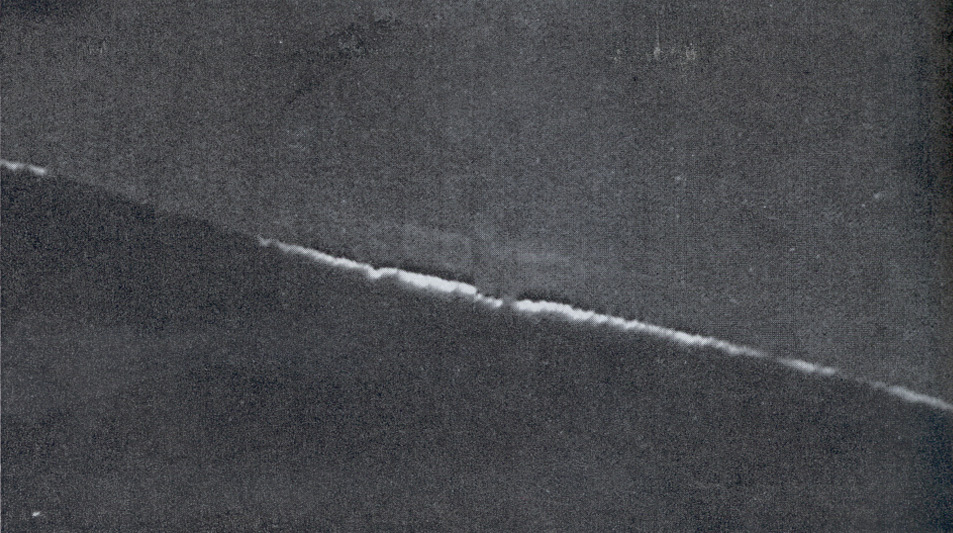 Courtesy NASA/JPL Illumination along western horizon approximately 15 minutes after local sunset. 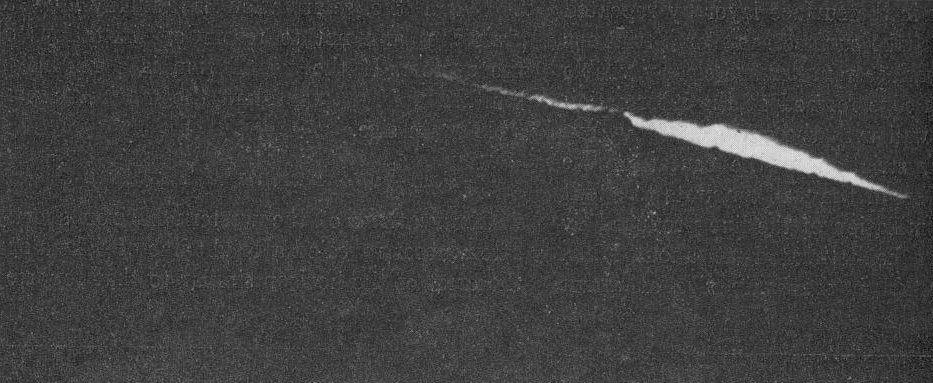 Courtesy NASA/JPL Illumination along western horizon approximately 90 minutes after local sunset. Horizon Dust Glows The Following image was taken by Surveyor6  67-H-1642 November 24, 1967 Sunlight diffracted at Moon's limb as seen in Surveyor VI picture of the horizon west of spacecraft. Now this Surveyor 6 image is the one that Richard Hoagland uses to show that there is a Glass Dome on the moon.... I disagree with that assessment though I have seen 'glass domes' in other areas  Lets go back to NASA's MOON FOUNTAINS It seems that the Apollo Astronauts drew some of these spectacular scenes. For the life of me I cannot fathom WHY THEY DIDN'T TAKE A PICTURE with that camera strapped to their chest  Or maybe they did... and that accounts for some of those missing image numbers we cannot get... In any case here is a sketch..  Above: On the left are lunar "twilight rays" sketched by Apollo 17 astronauts; on the right are terrestrial crepuscular rays photographed by author Trudy E. Bell. Credit: NASA/JPL Here on Earth we see something similar: crepuscular rays. These are shafts of light and shadow cast by mountain ridges at sunrise or sunset. We see the shafts when they pass through dusty air. Perhaps the Moon's "twilight rays" are caused, likewise, by mountain shadows passing through levitating moondust. Many planetary scientists in the 1970s thought so, and some of them wrote papers to that effect (see the "more information" box at the end of this story for references). But without an atmosphere, how could dust hover far above the Moon's surface? Even if temporarily kicked up by, say, a meteorite impact, wouldn't dust particles rapidly settle back onto the ground? Well, no--at least not according to the "dynamic fountain model" for lunar dust recently proposed by Timothy J. Stubbs, Richard R. Vondrak, and William M. Farrell of the Laboratory for Extraterrestrial Physics at NASA's Goddard Space Flight Center. "The Moon seems to have a tenuous atmosphere of moving dust particles," Stubbs explains. "We use the word 'fountain' to evoke the idea of a drinking fountain: the arc of water coming out of the spout looks static, but we know the water molecules are in motion." In the same way, individual bits of moondust are constantly leaping up from and falling back to the Moon's surface, giving rise to a "dust atmosphere" that looks static but is composed of dust particles in constant motion. [/COLOR]  Lunar "twilight rays" sketched by Apollo 17 astronauts Here it in NASA's own words.. Audio File: Moon Fountains MP3 Astronauts need to know, because in the years ahead NASA plans to send people back to the Moon, and deep dark craters are places where they might find pockets of frozen water--a crucial resource for any colony. Will they also encounter swarms of electric dust? Credits: Author: Trudy E. Bell NASA Science Reports - Rest of Article - Moon Fountains A Dynamic Fountain Model for Lunar Dust by Timothy J. Stubbs, Richard R. Vondrak, and William M. Farrell During the Apollo era of exploration it was discovered that sunlight was scattered at the terminators giving rise to “horizon glow” and “streamers” above the lunar surface. This was observed from the dark side of the Moon during sunset and sunrise by both surface landers and astronauts in orbit. These observations were quite unexpected, as the Moon was thought to be a pristine environment with a negligible atmosphere or exosphere. LPI-1899 PDF Next Installment Moon Storms |

|
|
|
#7 |
|
Guest
Posts: n/a
|
Exhibit #11
Moon Storms Levitating Dust Clouds follow the Terminator A Tale from NASA 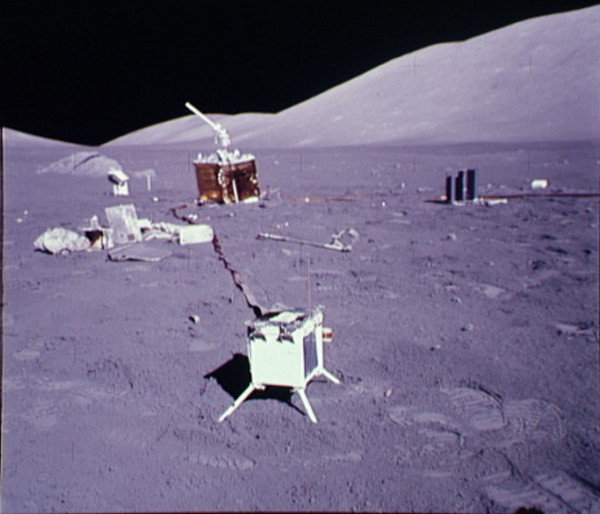 Image Credit: NASA/JPL An old Apollo experiment is telling researchers something new and surprising about the moon.The box in the foreground is the Lunar Ejecta and Meteorites Experiment (LEAM). Moon Storms 12.07.2005 + Play Audio | + Download Audio December 7, 2005: Every lunar morning, when the sun first peeks over the dusty soil of the moon after two weeks of frigid lunar night, a strange storm stirs the surface. The next time you see the moon, trace your finger along the terminator, the dividing line between lunar night and day. That's where the storm is. It's a long and skinny dust storm, stretching all the way from the north pole to the south pole, swirling across the surface, following the terminator as sunrise ceaselessly sweeps around the moon. Never heard of it? Few have. But scientists are increasingly confident that the storm is real. "To everyone's surprise," says Olhoeft, "LEAM saw a large number of particles every morning, mostly coming from the east or west--rather than above or below--and mostly slower than speeds expected for lunar ejecta." What could cause this? Stubbs has an idea: "The dayside of the moon is positively charged; the nightside is negatively charged." At the interface between night and day, he explains, "electrostatically charged dust would be pushed across the terminator sideways," by horizontal electric fields. (Learn more: "Moon Fountains." ) It's even possible that these storms have been spotted from Earth: For centuries, there have been reports of strange glowing lights on the moon, known as "lunar transient phenomena" or LTPs. Some LTPs have been observed as momentary flashes--now generally accepted to be visible evidence of meteoroids impacting the lunar surface. But others have appeared as amorphous reddish or whitish glows or even as dusky hazy regions that change shape or disappear over seconds or minutes. Early explanations, never satisfactory, ranged from volcanic gases to observers' overactive imaginations (including visiting extraterrestrials). Now a new scientific explanation is gaining traction. "It may be that LTPs are caused by sunlight reflecting off rising plumes of electrostatically lofted lunar dust," Olhoeft suggests. All this matters to NASA because, by 2018 or so, astronauts are returning to the Moon. Unlike Apollo astronauts, who never experienced lunar sunrise, the next explorers are going to establish a permanent outpost. They'll be there in the morning when the storm sweeps by. The wall of dust, if it exists, might be diaphanous, invisible, harmless. Or it could be a real problem, clogging spacesuits, coating surfaces and causing hardware to overheat. Which will it be? Says Stubbs, "we've still got a lot to learn about the Moon." SOURCE PAGE: Moon Storms NASA So sunset and sunrise rays in a saffron colored sky while raging dust storms sweep around the Moon... Not quite the picture NASA USED to show us  Coming Soon Prof. Johann Hansen and the Atmosphere discrepancy on the Lunar Farside |

|
|
|
#8 | |
|
Avalon Senior Member
Join Date: Sep 2008
Location: The Netherlands
Posts: 13
|
Hello again zorgon, this is the second absolute magnificent thread I see you started here and I will study this one also of course.
But accept for the time being my compliments for this thread also and for your excellent research.:up: Quote:
 Very interesting what you show and say here, I am really looking forward to your explanation about that. |
|
|
|

|
|
|
#9 |
|
Avalon Senior Member
Join Date: Sep 2008
Location: The Netherlands
Posts: 35
|
I found it also very weird that we couldn't see any stars in the pics of NASA.
Some said it's the focussing of the camera to the surface of the moon and the reflection of the light blinds the effect to see the stars. Now i see the pics of the DoD/NAVY project with stars, very nice, thank you. BTW  zorgon, nice thread. zorgon, nice thread.
|
|
|

|
|
|
#10 |
|
Avalon Senior Member
Join Date: Sep 2008
Posts: 10
|
wow, thanks a lot for this zorgon, will def go over it soon.
|
|
|

|
|
|
#11 |
|
Avalon Senior Member
Join Date: Sep 2008
Posts: 151
|
In my mind, i cannot fathom how a body could have mass, but not attact an atmosphere. Is it breathable? Well...likely not on the near side. However, John has asserted that on the farside there exists enough atmosphere to make it breathable. Now...i am unsure if it would have enough O2 to keep the blood saturation high enough, or if the sodium levels (or other mineral) would not be somewhat toxic or uncomfortable to our respiratory system.
Now, i would tend to agree that if there is atmosphere, it would likely be on the farside, and it would tend to settle more into low lying areas and caves (gravity and all). I believe that the Earths magnetosphere is largely overlooked as causation for any of the anomolous findings, as well. That being said, excellent info, Zorgon. Nice to have a place to stretch the old legs, huh? |
|
|

|
|
|
#12 | |
|
Project Camelot Witness
Join Date: Sep 2008
Location: Las Vegas
Posts: 222
|
Quote:
The breathable atmosphere is on both the nearside and the farside and equal to about 18,000 feet here on Earth. Since Pari Spolter, in her book, "Gravitational Force of the Sun" has both mathematically and scientifically debunked Newtons Law of Universal Gravitation, the gravitational constant, and Einsteins mathematical hoaxes: the Theories of Relativity both General and Special, we don't need to be arguing about the breathable atmosphere on the moon anymore. 
|
|
|
|

|
|
|
#13 | |
|
Avalon Senior Member
Join Date: Sep 2008
Posts: 151
|
Quote:
 and there we have it. I have read through some of the Spolter stuff on the pegasus site. Very interesting, to say the least. and there we have it. I have read through some of the Spolter stuff on the pegasus site. Very interesting, to say the least.
|
|
|
|

|
|
|
#14 | |
|
Guest
Posts: n/a
|
Quote:
Not only did NASA loose ours, but the BBC lost all their copies and Patrick was in charge... I will cover that in another thread. I have the opportunity here to put all the research into groups so as not to confuse things so we can use it as reference. Sometimes though things are tied together so will get some cross over... All the data is on our website, but there is so much there already its hard to find so these summaries will make it easier... Now about the STARS... Patrick Moore asks the alleged Apollo 11 crew "could you actually see the stars?" The First Lunar Landing As Told By The Astronauts: Armstrong, Aldrin, and Collins in a Post-flight Press Conference, NASA EP-73, 1989 pt. VI: PATRICK MOORE: ..[W]hen you looked up at the sky, could you actually see the stars in the solar corona in spite of the glare? .. ARMSTRONG: We were never able to see stars from the lunar surface or on the daylight side of the Moon by eye without looking through the optics. I don't recall during the period of time that we were photographing the solar corona what stars we could see. COLLINS: I don't remember seeing any. http://video.google.com/videoplay?do...03469580790620 Now here is the REAL KICKER One of the things with the NASA Obfuscation is that they sing different tunes... They expect you to accept that you cannot see stars while on the Moon... But another department at NASA has THIS to say... Stars and the Solstice Sun Composite Credit & Copyright: Jerry Lodriguss (Catching the Light) If you could turn off the atmosphere's ability to scatter overwhelming sunlight, today's daytime sky might look something like this ... with the Sun surrounded by the stars of the constellations Taurus and Gemini. Of course, today is the Solstice. Traveling along the ecliptic plane, the Sun is at its northernmost position in planet Earth's sky, marking the astronomical beginning of summer in the north. Accurate for the exact time of today's Solstice, this composite image also shows the Sun at the proper scale (about the angular size of the Full Moon). Open star cluster M35 is to the Sun's left, and the other two bright stars in view are Mu and Eta Geminorum. Digitally superimposed on a nighttime image of the stars, the Sun itself is a composite of a picture taken through a solar filter and a series of images of the solar corona recorded during the solar eclipse of February 26, 1998 by Andreas Gada. 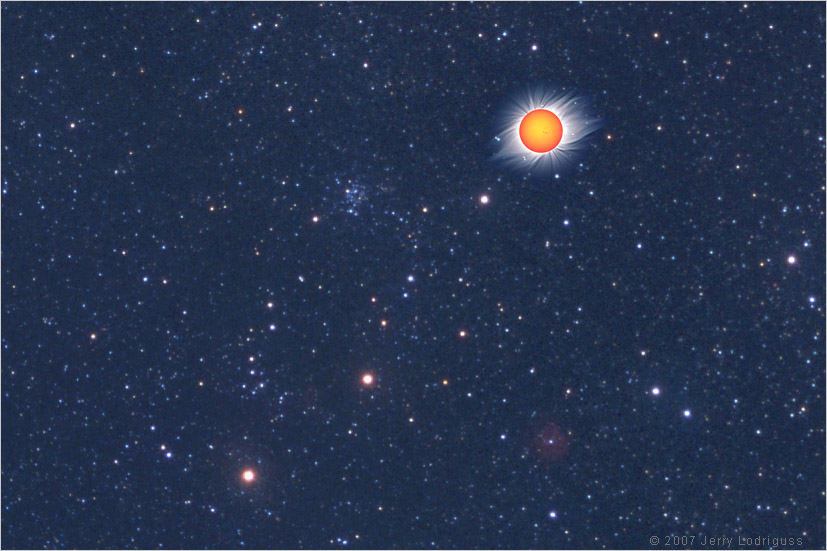 SOURCE: NASA APOD 2007 June 21 So there you have it... once again NASA claims you cannot see stars in an airless sky on the Moon... BUT at the same time if we take the air away from Earth... you would see a tiny Sun and LOTS of STARS Now which is it NASA? You can't have it both ways.... The Earth and Moon are close enough together that the Sun and Stars would look the same... As I said Obfuscation but the Lemmings just suck it up without thinking or asking why... And according to Alan Bean HE draws the Sun like THIS... with the Sun behind the lander yet the lander fully and brightly lit on the shadow side  Sun on the Moon Apollo 12 AS12-46-6765  Sun on the Moon Apollo shots  Sun in Low Earth Orbit   Sun reflected in Visor Low Earth Orbit  Sun reflected in Visor on the Moon Apollo Missions  The video below is a moon hoax video but it illustrates the Sun issue very nicely http://www.youtube.com/watch?v=EaV7QB_ReTw TEST: 1) WHY is the Sun a different size on the Moon than in LEO in all the photos? 2) WHY does NASA say NO STARS visible from the Moon yet tell us if Earth had no atmosphere to diffuse the light we would indeed see a daytime sky full of stars? 
|
|

|
|
|
#15 |
|
Guest
Posts: n/a
|
Test Complete
|

|
|
|
#16 |
|
Avalon Senior Member
Join Date: Sep 2008
Posts: 1,098
|
excellent zorgon!! everything ive ever seen from you is great though!! Thanks soo much man. Much respect.
|
|
|

|
 |
«
Previous Thread
|
Next Thread
»
|
|
All times are GMT. The time now is 09:01 AM.





 Linear Mode
Linear Mode

